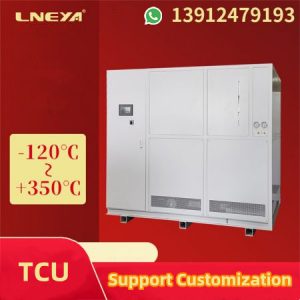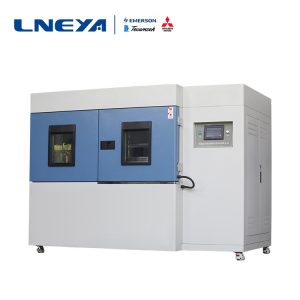What are the functions of the controllers for semiconductor temperature control equipment?
In the temperature control equipment of semiconductor components, each accessory has a different function. Due to the different functions, the function of the temperature control valve and controller of the semiconductor components of LNEYA is different.
The temperature-controlled water pump of the semiconductor component is a tool for accelerating the flow of water to enhance the heat transfer effect of the water in the heat exchanger. The water flow switch of the semiconductor temperature control device is used for the control or interruption protection of the fluid flow in the pipeline. When the fluid flow reaches the set value, the switch automatically cuts off (or turns on) the circuit. The pressure controller is used for pressure control and pressure protection. The unit has low pressure and high pressure controllers to control the working range of the system’s pressure. When the system pressure reaches the set value, the switch automatically cuts off (or turns on) the circuit.
The differential pressure controller of the semiconductor temperature control device is used as a pressure difference control, and when the pressure difference reaches the set value, the switch automatically cuts off (or turns on) the circuit. The temperature controller is used for control or protection of the unit. When the temperature reaches the set value, the switch automatically cuts off (or turns on) the circuit. In our products, temperature control is often used to control the unit’s start and stop conditions. Some still require a temperature controller like antifreeze.
The semiconductor temperature control device is used to indicate the condition of the refrigerant in the liquid line in the refrigeration device, the water content in the refrigerant, the flow condition of the lubricating oil from the oil separator in the return line, and some sight glass belts. There is an indicator that indicates the water content in the refrigerant by changing its color. (green means dry and yellow means wet). The volume change of water caused by temperature changes, the expansion tank is used to store this part of the expansion water, the system is regulated and fixed, and the system can compensate part of the water.
The semiconductor temperature control device is a relatively new device, and the performance above is required to be higher to be more stable.
Recommandations connexes
-
Précautions d'utilisation de l'équipement de contrôle de la température du réacteur de la série ZLF/SR
1147L'équipement de contrôle de la température de la marmite de réaction adopte la méthode de contrôle PID, ce qui améliore considérablement la précision du contrôle de la température de l'ensemble de la machine. Le micro-ordinateur pour le refroidissement ou le chauffage passera automatiquement au travail en accord...
Voir les détails -
Description de la fonction de la boîte d'essai de choc thermique humide alterné à haute et basse température
930Les consommateurs doivent prêter attention aux performances de l'enceinte d'essai à choc thermique humide alternant des températures élevées et basses. L'enceinte d'essai de LNEYA est plus proche des besoins de l'entreprise acheteuse. L'enceinte d'essai à chaleur et chocs humides alternés à haute et basse température...
Voir les détails -
Liquid-cooled battery pack AMS cooling system introduction
879The LNEYA liquid-cooled battery pack AMS cooling system can be applied in many scenarios in the new energy material industry. In the midstream industry of new energy raw materials, the purification of raw materials, the process temperature con...
Voir les détails -
Traitement des gaz d'échappement insuffisants dans les compresseurs à chambre d'essai d'impact à haute et basse température
1214L'efficacité de la chambre d'essai d'impact à haute et basse température pendant l'utilisation est très importante. S'il y a un manque de gaz d'échappement du compresseur, nous avons besoin de nos techniciens LNEYA pour résoudre le problème à temps. Alors, comment mieux résoudre le problème ?
Voir les détails
 LNEYA Industrial Chillers Fabricant Fournisseur
LNEYA Industrial Chillers Fabricant Fournisseur













